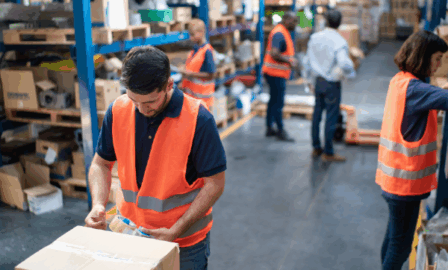Key Takeaways from the Gartner Supply Chain Symposium/Xpo 2022
At the Gartner Supply Chain Symposium/Xpo 2022, supply chain officers and leaders discussed the challenges they continue to face in an uncertain, complex, and dynamic environment. The current state of global supply chain is experiencing delays across the board – including raw materials shortages, labor shortages, and everchanging stakeholder needs, among others – and businesses and consumers across all industries are finding ways to navigate these disruptions.
Gartner Supply Chain Symposium Recap
This year’s conference focused heavily on actions that the supply chain industry can take to solve and improve these current challenges, including recalibrating business strategy, adopting emerging technology, and working toward better resiliency. Below are my three quick takeaways from this year’s Gartner Supply Chain Symposium/Xpo:
- Data Aggregation is Key: A single platform that can give you access to data sources and enable early visibility into your supply chain is key to draw early delay indicators and minimize disruption. Data aggregation allows for better collecting and processing of data – having it all in a centralized location prevents siloed or mismanaged data and enables harmonization. This is key to better operational efficiency and cross-functional alignment.
- Trusting Artificial Intelligence and Machine Analysis: Using machine learning for data analysis can take aggregated data and transform it through algorithms that provide meaningful and actionable insights. This is an aspirational shift for being able to collect and analyze large quantities of data and then produce effective recommendations to improve your supply chain.
- A Shift Toward Autonomous Supply Chain Planning: We’ve heard it before, and we’ll continue to hear it again – can we really trust automation? There’s an inevitable human factor of hesitation and nervousness that comes with putting trust into machine learning algorithms and letting the technology guide the decision-making process. Data is constantly changing, so how do you know that the machine analyses is making the right choice for planning or forecasting at that exact moment? The ability to close your eyes and let the machine do the work can be very difficult – effective change management and training will need to be prioritized as the supply chain becomes more digitized.
As supply chain professionals continue to navigate change and uncertainty in the current environment, an optimized, digital supply chain will be key to success. Throughout the rest of 2022, we expect to see businesses prioritize data aggregation, make a shift toward autonomous supply chain planning, and implement effective change management strategies.
Subscribe to Clarkston's Insights



